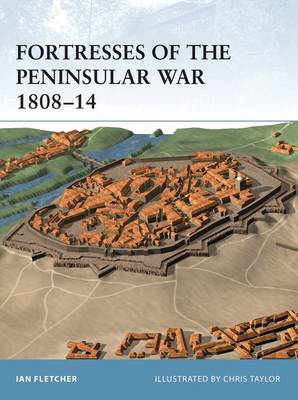Fortress
2 primary works • 3 total works
Book 7
Following the battle of Bussaco on 27 September 1810 Wellington's heavily outnumbered troops began to withdraw towards Lisbon. By the evening of 9 October the British and Portuguese began to withdraw behind a line of defensive works that had been built to the north of Lisbon. These were not the rudimentary field works that the French anticipated, but an enormous network of forts, batteries and redoubts whose construction had been started the previous November - the Lines of Torres Vedras. This 30-mile-wide line utilised the area's natural defences, damming rivers, scarping hillsides, blocking roads and establishing forts upon almost all of the hills. This title describes its design, creation and effectiveness in the face of French attacks.
Book 12
The major fortresses of the Iberian peninsular controlled the most important routes in and out of the country. Although all these fortifications had existed prior to the French invasion, they were considerably renovated and updated according to the principles of French military engineering laid down by the great engineer Vauban. This renovation included the adding of ravelins, bastions, curtains, counterscarps and all the other defensive features of the period. This title examines these fortifications, their design, development and strategic importance. It also deals with the various attempts, both successful and otherwise, that were made to besiege and storm them, some of the bloodiest and most savage encounters of the Peninsular War.


